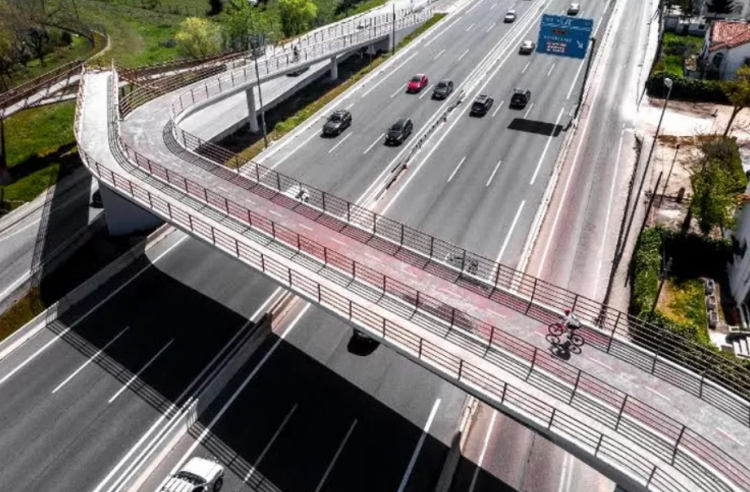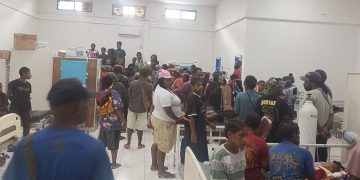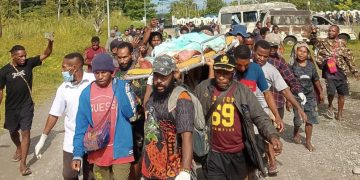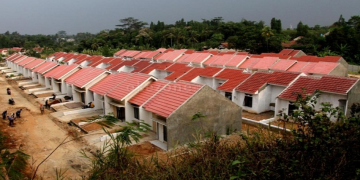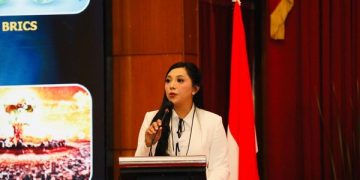Papuaaround.com – The Ministry of Public Works and Housing (PUPR) is currently developing key government complexes across four newly established autonomous regions (DOB) in Papua — Southwest Papua, South Papua, Central Papua, and Highland Papua. The initiative marks a significant step toward strengthening administrative infrastructure and accelerating development in Indonesia’s easternmost region.
Deputy Minister of Public Works, Diana Kusumastuti, stated that all government buildings across the four new provinces are expected to be operational by 2027. “We have agreed that all the buildings must be functional by 2027,” Diana said after a coordination meeting with Deputy Minister of Home Affairs Ribka Haluk at the PUPR Office in South Jakarta on Wednesday, October 29, 2025.
The construction projects include provincial governor offices, regional legislative council (DPRD) buildings, and Papua People’s Assembly (MRP) offices. These facilities are designed to serve as the administrative core of each province and support the decentralization goals envisioned through the establishment of the new DOB.
Development Stages Across the Four Provinces
Diana explained that construction in Southwest Papua and South Papua has started earlier than in the other regions, while Central Papua is next in line for implementation. The Highland Papua project, however, remains in the tender preparation stage due to a recent relocation of its designated site.
“Highland Papua had to change its location. The new site has been finalized, and we are currently completing the readiness criteria,” she said. The construction for Highland Papua is projected to begin in 2026 once all preparatory requirements are met.
In terms of funding, Diana noted that each building will require an estimated budget of between IDR 100 billion and IDR 150 billion, depending on design specifications and logistical factors. The ministry emphasized that the project aligns with the government’s broader mission to establish sustainable infrastructure and governance systems across Indonesia’s new provinces.
Integrated Development with Trans-Papua Road Project
In parallel, the Ministry of Public Works continues to advance the Trans-Papua Road project — a vital infrastructure development connecting several major regions in Papua. Minister of Public Works Dody Hanggodo confirmed that the 50.14-kilometer Mamberamo–Elelim segment remains under active construction. The project, originally envisioned during the administration of Indonesia’s second president, Soeharto, is seen as a symbol of the state’s enduring commitment to equitable development in Papua.
“The Trans-Papua project continues to progress, just like the development in the new autonomous regions (DOB),” Dody said during a press briefing following the commemoration of World Habitat Day and World Cities Day in Bekasi, West Java, on October 27, 2025.
Dody emphasized that improving inter-regional connectivity is crucial to enhancing daily mobility and economic opportunities for Papuans. “Welfare always begins with open discussions, and we are focusing on the Trans-Papua route as well as the growth of several new provinces. These projects are still ongoing,” he added.
Boosting Connectivity and Regional Equality
The Trans-Papua Road serves as a strategic infrastructure backbone that aims to enhance accessibility across the region, particularly linking Jayapura and Wamena. Once completed, it is expected to facilitate the movement of goods, improve logistics, and stimulate regional economic activity.
By integrating the construction of government buildings with major transportation networks, the government seeks to foster more balanced national development and ensure that the newly formed provinces have both administrative and physical infrastructure in place.
The comprehensive approach — combining government facilities with connectivity projects — highlights Indonesia’s commitment to inclusive growth, state presence, and long-term stability in Papua. With the 2027 target in sight, these efforts mark a milestone in transforming Papua into a more developed, integrated, and self-sustaining region.

